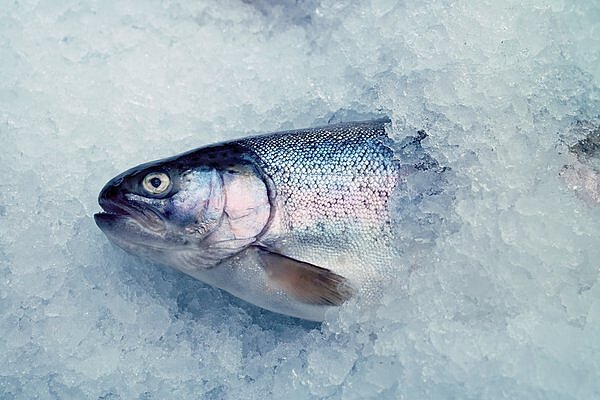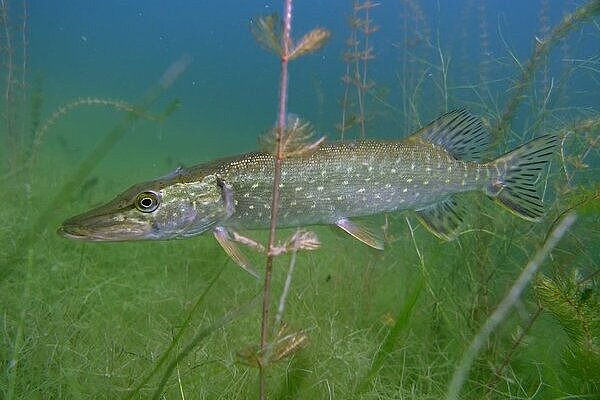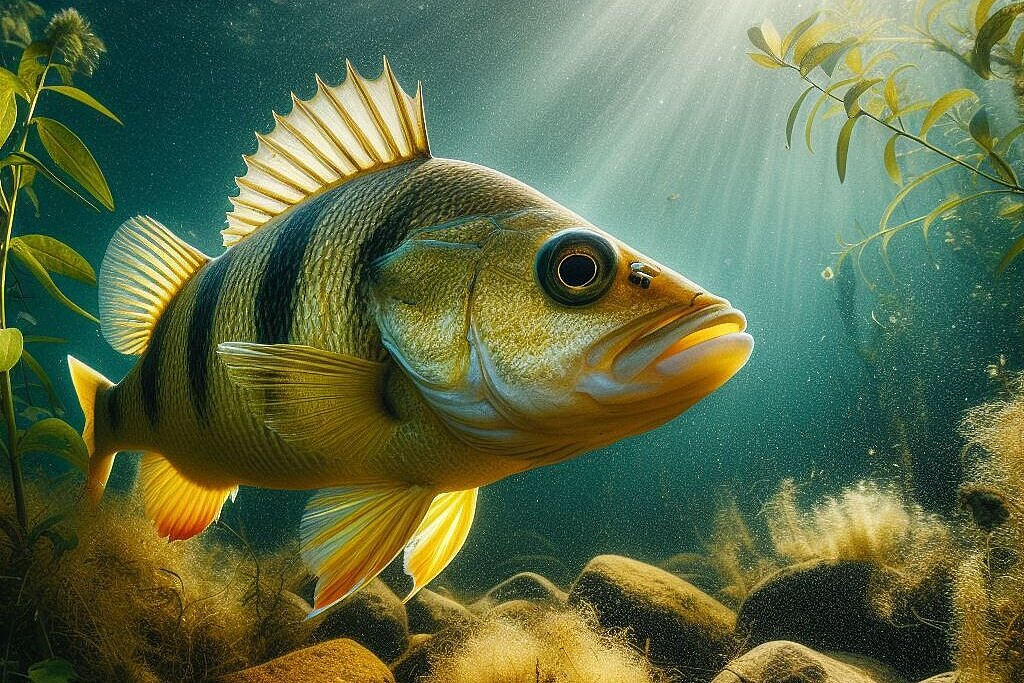Carp

What is carp?
Carp is a freshwater fish that belongs to the bony fish family. It has an elongated body with large scales and a strong mouth. Carp can grow up to 120 cm long and weigh 40 kg. They feed mainly on plants, algae, insects and worms.
Carp come in different colors and shapes, depending on the species and breeding. The best known are the wild carp, the mirror carp, the scaly carp and the leather carp. Carp have been used as food for thousands of years and are particularly common in Asia and Europe.
Benefits of carp for dogs
Carp can be a healthy and tasty ingredient for dogs if it is prepared correctly. Carp contains a lot of protein, which is important for muscle building and cell regeneration. It also provides essential fatty acids such as omega-3 and omega-6, which support the immune system, skin and coat.
Carp is also rich in vitamins and minerals such as vitamin A, B vitamins, iron, zinc and iodine. These nutrients contribute to the health of the eyes, nervous system, blood and thyroid. Carp also has a low fat and calorie content compared to other fish species, making it a good choice for overweight or allergic dogs.
Disadvantages of carp for dogs
Carp is not without risks for dogs. One of the biggest disadvantages is the risk of bones. Bones are the small bones in the fish flesh that can get stuck when eaten or cause internal injuries. You should therefore always thoroughly debone or fillet the carp before giving it to your dog.
Another disadvantage of carp is the possible contamination with harmful substances such as mercury or parasites. These can accumulate in the fish tissue and lead to health problems. To avoid this, you should only buy fresh or frozen carp from trustworthy sources and cook it thoroughly or freeze it.
Carp can be a tasty change in your dog's diet if you pay attention to a few points. Make sure to bone or fillet the fish, cook or freeze it well and only feed it in moderation. This way you can offer your dog the benefits of carp without the disadvantages.
If you notice any signs of hypersensitivity or poisoning in your dog, you should see your vet immediately. We are not a substitute for a vet, but we try to be as accurate as possible. Every dog reacts differently and we recommend you get a second opinion or consult your vet if in doubt.
Stay healthy and take good care of your four-legged friend!😊
Similar to Carp
Trout has many benefits for your dog's health and well-being. Trout is rich in high-quality protein, which is important for muscle building and cell renewal. Trout is also rich in omega-3 fatty...
Pike can be a healthy and tasty food supplement for dogs. It offers the following benefits: Pike is hypoallergenic. This means that it rarely triggers allergies or intolerances. This is...
Pikeperch is a good source of high-quality protein, which is important for muscle building and regeneration in dogs. Protein also provides essential amino acids that dogs cannot produce themselves...
Perch is a family of fish from the perch order. There are over 220 species of perch, 14 of which live in temperate Eurasia and more than 200 in North America east of the Rocky Mountains. The best...



